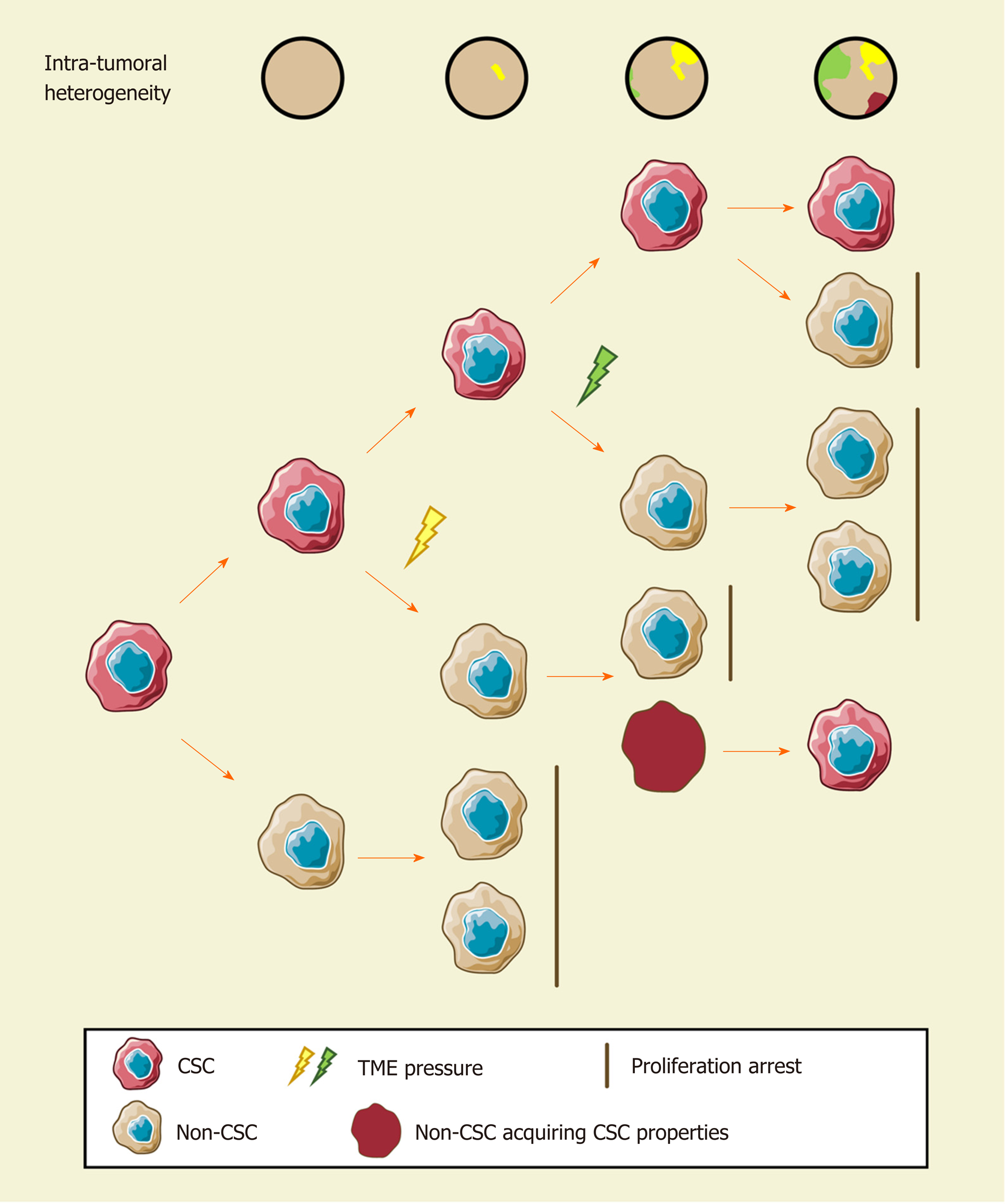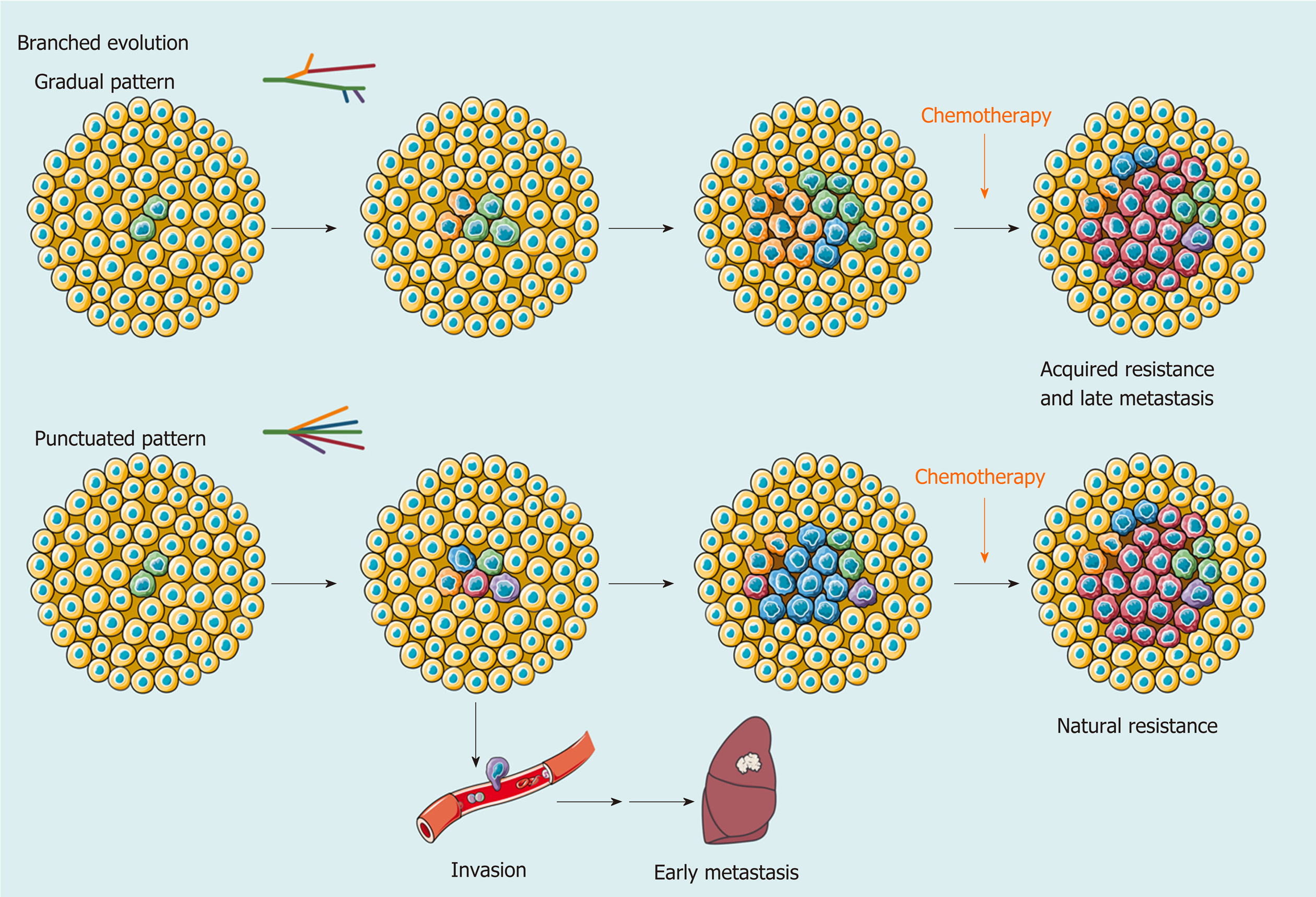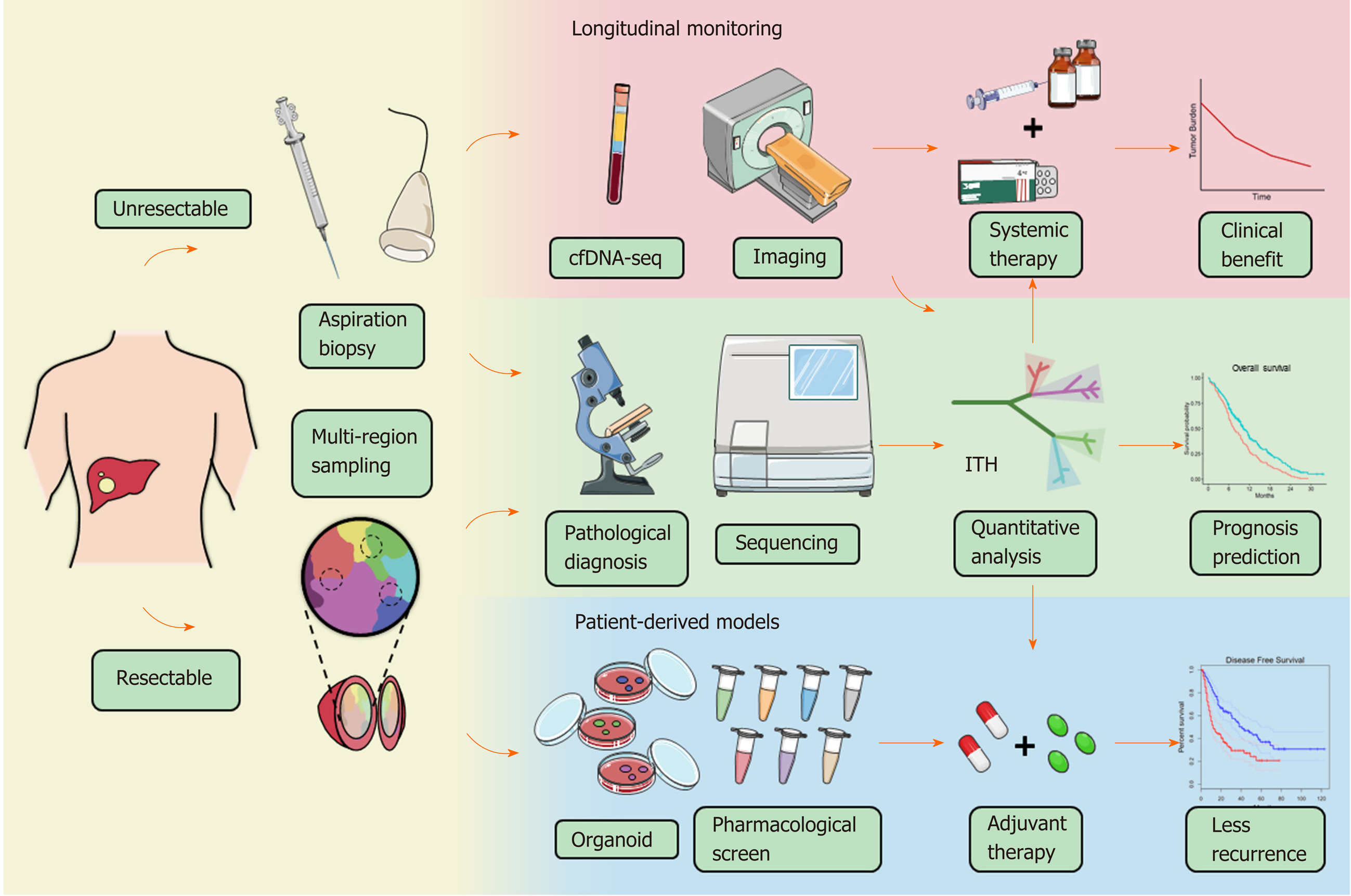Copyright
©The Author(s) 2020.
World J Gastroenterol. Jul 14, 2020; 26(26): 3720-3736
Published online Jul 14, 2020. doi: 10.3748/wjg.v26.i26.3720
Published online Jul 14, 2020. doi: 10.3748/wjg.v26.i26.3720
Figure 1 The cancer stem cell model and intratumoral heterogeneity.
The cancer stem cell (CSC) model assumes that only CSCs possess robust self-renewal characteristics and the ability to differentiate. Different stimuli of CSCs induce distinct functional phenotypes to adapt to certain environmental stresses. Non-CSCs can spontaneously convert to a stem-like state and establish a new hierarchical CSC clone under certain circumstances. Consequently, the extent of ITH in hepatocellular carcinoma increase gradually. CSC: Cancer stem cell.
Figure 2 Branched evolution shapes intratumoral heterogeneity.
As a result of branched evolution, the genetic heterogeneous subclones may be generated through two different trajectories. In the gradual pattern, subclones increase gradually due to genomic instability or microenvironment changes, such as acquired drug resistance and metastasis caused by systemic therapy. However, the punctuated pattern, also known as big bang mode, supposes that all subclones already exist in early development of hepatocellular carcinoma (HCC). Different subclones obtain a survival advantage in spatiotemporally specific microenvironment and change the extent of intratumoral heterogeneity at a clonal level. This model provides an explanation for early metastasis and natural resistance of HCC in clinic.
Figure 3 Schematic diagram of potential workflow for intratumoral heterogeneity clinical applications.
For the patients with resectable liver cancer, intratumoral heterogeneity (ITH) can be evaluated by multiregional sampling of surgical samples, and in the meantime, patient-derived organoid model can be constructed for drug screening. The individualized treatment strategy will be determined according to the heterogeneity evaluation and the pharmacological results. For the patients with advanced hepatocellular carcinoma, biopsies will be used for both pathological diagnosis and ITH investigation. Moreover, ITH evaluation based on cell-free DNA and advanced imaging should be carried out to monitor ITH dynamically and guide medication adjustment. ITH: Intratumoral heterogeneity; cfDNA: Cell-free DNA.
- Citation: Zhang Q, Lou Y, Bai XL, Liang TB. Intratumoral heterogeneity of hepatocellular carcinoma: From single-cell to population-based studies. World J Gastroenterol 2020; 26(26): 3720-3736
- URL: https://www.wjgnet.com/1007-9327/full/v26/i26/3720.htm
- DOI: https://dx.doi.org/10.3748/wjg.v26.i26.3720











